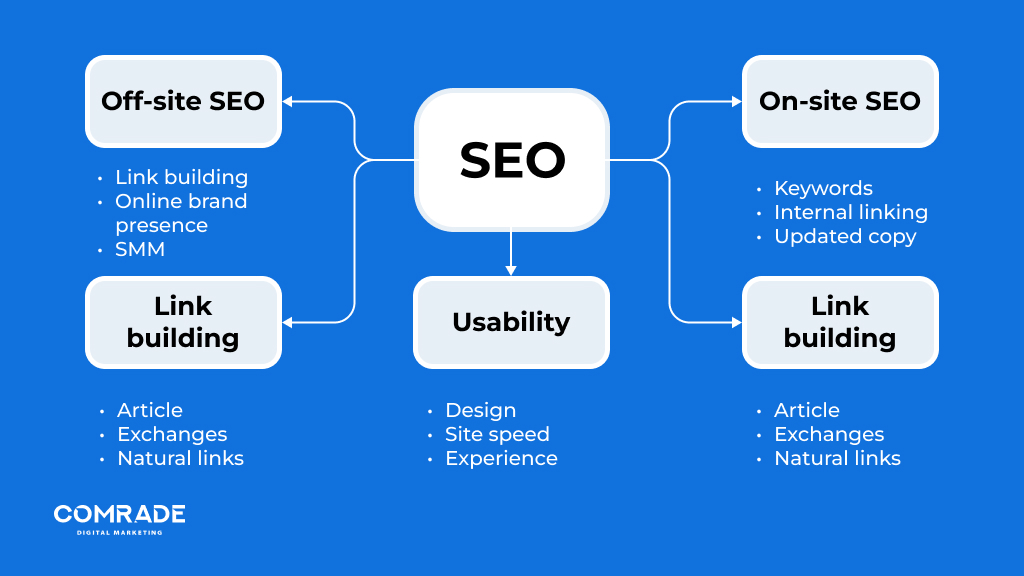Discovering What Is Not Considered a Default Medium in Google Analytics for SEO
Discovering What Is Not Considered a Default Medium in Google Analytics for SEO
Blog Article
Unveiling the Unconventional Mediums in Google Analytics Beyond Default Setups
In the realm of electronic analytics, Google Analytics stands as a foundation for companies seeking to comprehend their online existence. By venturing beyond the surface area and diving right into the ins and outs of social media data, e-mail campaign efficiency, reference website traffic sources, straight website traffic patterns, and custom-made network groupings, a treasure trove of details awaits those eager to welcome a much more nuanced method.

Leveraging Social Media Site Insights
Occasionally forgotten, yet greatly useful, is the practice of leveraging social media insights within the world of Google Analytics. By integrating data from platforms like Facebook, Twitter, Instagram, and LinkedIn right into Google Analytics, organizations can acquire a deeper understanding of their target market and the effectiveness of their social media sites campaigns.
Through this integration, marketing experts can track and assess individual actions on their web site that stems from social media platforms. They can recognize which social media networks are driving the most traffic, which content is resonating with the audience, and which projects are transforming one of the most leads. This insight permits for data-driven decisions to maximize social networks strategies and enhance overall marketing efficiency.
Additionally, by integrating social networks understandings with Google Analytics, services can create much more targeted and customized projects - what is not considered a default medium in google analytics. They can make use of market info, passions, and on the internet behaviors collected from social media to improve their audience division and provide customized messages that resonate with particular customer teams. This targeted technique can lead to higher interaction, increased conversions, and inevitably, boosted roi
Discovering Email Campaign Efficiency
Uncovering Email Campaign Efficiency involves evaluating vital metrics and performance indicators to examine the effectiveness of email advertising and marketing initiatives. When delving right into e-mail project performance, it is critical to examine metrics such as open prices, click-through prices, conversion rates, and unsubscribe rates. Open prices indicate the percent of receivers that opened the e-mail, providing insight into the effectiveness of subject lines and sender names. Click-through rates determine the percentage of recipients that clicked on links within the email, showing involvement levels. Conversion rates track the percent of recipients that finished a desired activity after clicking a link in the email, such as buying or authorizing up for a newsletter. Unsubscribe prices highlight the number of recipients that opted out of receiving further emails, dropping light on email content quality and significance. By examining these metrics, marketing professionals can fine-tune their email projects for better engagement and performance.
Analyzing Referral Traffic Sources
After reviewing the performance of e-mail projects with crucial metrics such as open prices and conversion rates, the following essential step is evaluating referral web traffic sources in Google Analytics to understand where website site visitors are coming from and exactly how they communicate with the website. Reference web traffic sources describe the sites that guide individuals to your site via clickable links. By delving into this information, organizations can acquire insights into which outside platforms are driving traffic to their site, whether it be social media systems, companion internet sites, or on the internet directory sites.
Examining reference website traffic can offer important details on the efficiency of exterior advertising and marketing efforts and partnerships. It helps companies recognize high-performing reference resources that add significantly to internet site web traffic and conversions. In addition, by understanding the actions of visitors originating from various reference resources, businesses can tailor their advertising methods to enhance engagement and conversions. Google Analytics supplies detailed records on referral traffic, enabling companies to track the efficiency of each recommendation resource properly and make data-driven choices to boost their on the internet visibility.
Checking Out Straight Web Traffic Patterns
Exploring the direct traffic patterns in Google Analytics gives valuable understandings right into customer habits and the performance of campaigns - what is not considered a default medium in google analytics. Straight website traffic describes site visitors that arrive at a site by straight typing the link find right into their browser, using bookmarks, or clicking untagged links. Recognizing straight web traffic patterns can aid online marketers evaluate the influence of offline marketing efforts, brand name recognition, and the performance of word-of-mouth references
By diving into direct web traffic data, companies can discover vital info concerning individual intent and brand commitment. Analyzing the behavior of direct site visitors, such as the web pages they see, the time invested on site, and the conversion rate, can give a deeper understanding of customer engagement and the total effectiveness of the site in transforming site visitors into clients.
Additionally, tracking straight web traffic patterns over time enables businesses to determine fads, seasonality results, and the success of certain campaigns or promos in driving direct check outs. This info can after that be utilized to fine-tune advertising techniques, optimize site material, and enhance the general user experience to maximize conversions.
Utilizing Custom-made Channel Groupings
Utilizing personalized channel groupings in Google Analytics enables businesses to classify and assess their internet site web traffic based on specific criteria, providing important understandings for enhancing advertising and marketing techniques. Personalized channel groups enable firms to develop their own tailored groupings of website traffic sources, such as social media, natural search, e-mail campaigns, and recommendation web traffic. By specifying these groups, organizations can acquire a much deeper understanding of exactly how different advertising and marketing networks contribute to their web site traffic and conversions.
This feature is specifically beneficial for organizations with varied advertising approaches across various systems. For instance, a business running both paid and organic social media sites campaigns can differentiate between both to assess their individual efficiency precisely. Additionally, customized channel collections can assist determine any kind of ignored or undervalued web traffic resources that may be driving useful interaction.
Verdict

By venturing beyond the surface and delving into the ins and outs of social media information, email campaign performance, referral web traffic sources, direct website traffic patterns, and customized channel groupings, a prize chest moved here of details waits for those ready to accept an extra nuanced approach. They can recognize which social media networks are driving the most traffic, which web content is reverberating with the target market, and which campaigns are converting the most leads.After evaluating the efficiency of e-mail campaigns via crucial metrics such as open rates and conversion rates, the next important step is analyzing original site referral web traffic resources in Google Analytics to comprehend where website site visitors are coming from and how they interact with the website. Customized channel collections enable firms to create their own tailored collections of website traffic sources, such as social media, natural search, email campaigns, and referral web traffic. By leveraging social media insights, uncovering e-mail campaign efficiency, analyzing recommendation website traffic resources, checking out straight website traffic patterns, and using customized network groupings, online marketers can get valuable insights right into their on-line visibility.
Report this page